Grottoes of West London: Marble Hill & Pope’s Grotto
A description of a visit to Pope’s Grotto and Marble Hill. In which I learn about garden history and the lives of the literary and letter-writing elite in 18th Century Twickenham.
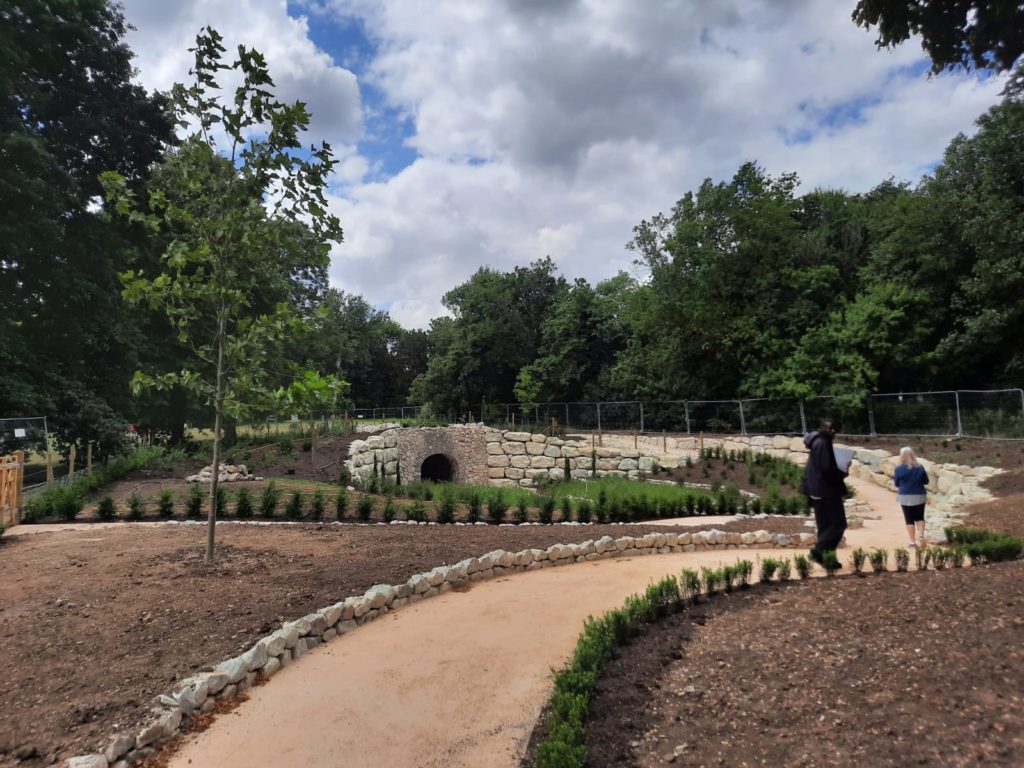
Grottoes: A Potted History
Twickenham is an area of London which is very rich in history and cultural activities. We were here a while ago to see Orleans House Gallery. I’m sure in due course we will be back to see the Eel Pie Island Museum, Turner’s House, Strawberry Hill etc. But today we are here for a very particular reason: to explore two of Twickenham’s surviving grottoes.
Grottoes are essentially small caves. Etymologically the word derives from the Latin for ‘crypt’. Grottoes can be natural, although there have been man-made or enhanced ones since Antiquity. Grottoes as a garden feature became popular in late 16th Century France, as part of the Mannerist style. Generally there will be a water feature, maybe some statues or decoration with stones and minerals. A good place for leisured contemplation and showing off how worldly and well travelled you are. Fancy grottoes could even serve as baths or chapels. Famous early examples include a grotto in the Boboli Gardens at the Palazzi Pitti in Florence (built 1583-93). By the 1630s stylish tastemakers had started constructing grottoes in England, including at Wilton House.
For some time I had been intending to visit Pope’s Grotto, the only remaining part of Alexander Pope’s house and garden at Cross Deep, Twickenham. So when an opportunity arose to see Pope’s Grotto before it closes for restoration, plus additionally to visit a second grotto at nearby Marble Hill, it seemed like an excellent opportunity. Read on to find out more about each, and decide whether they might be worth planning your own trip to West London at some stage to see them.


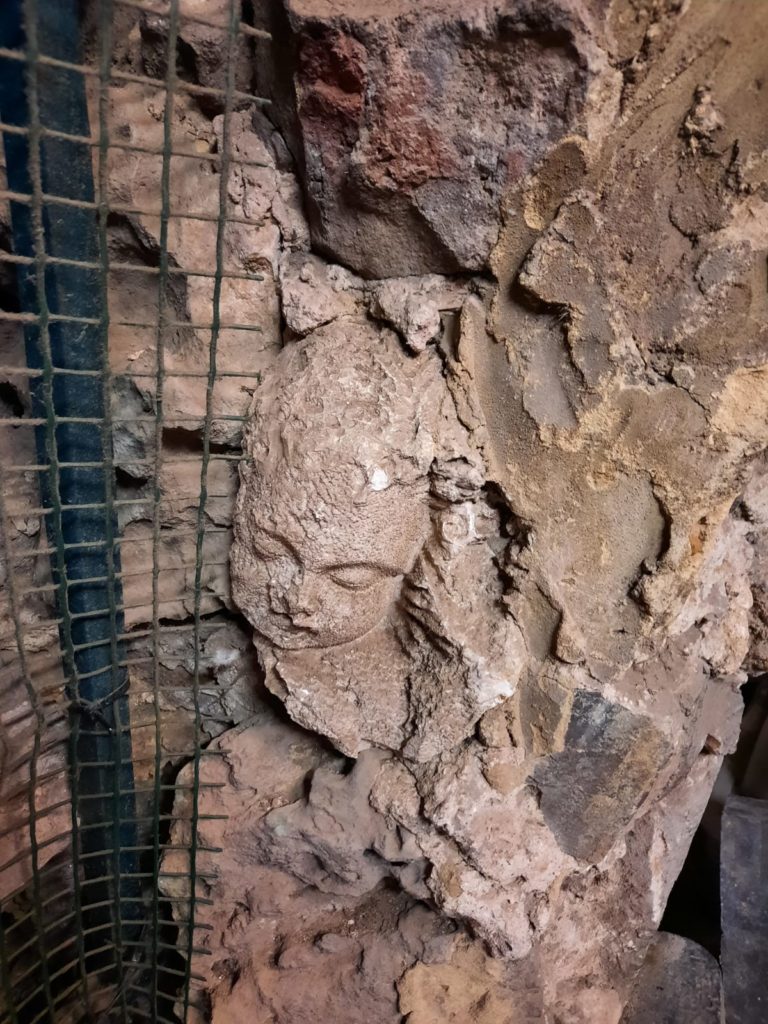
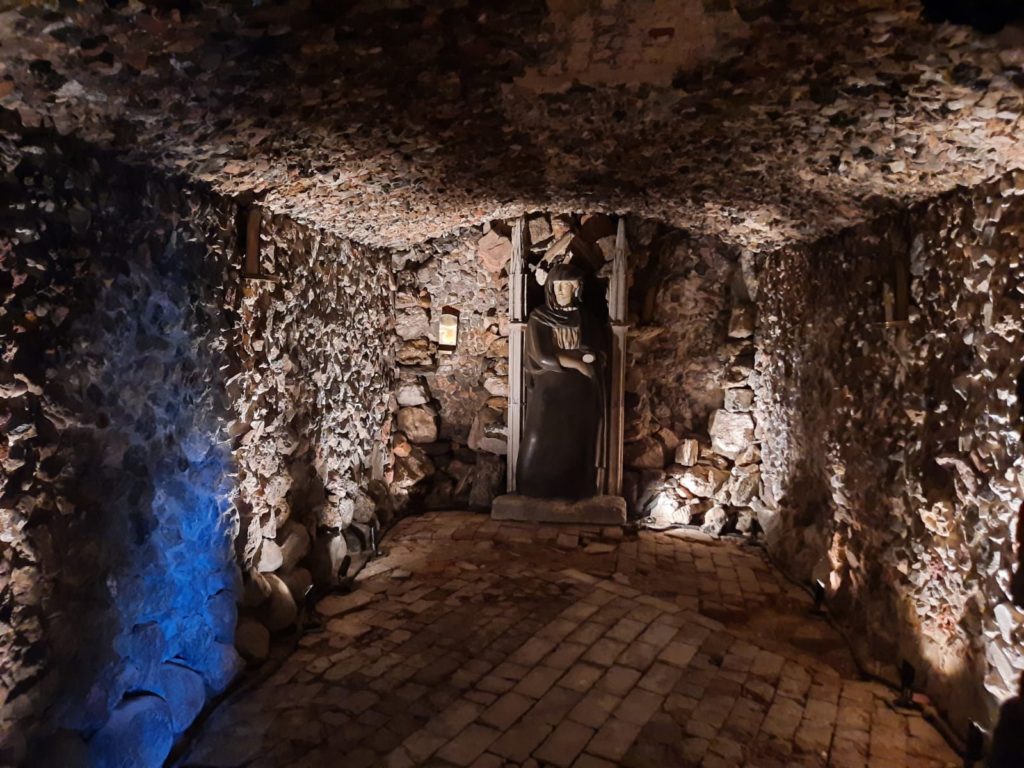
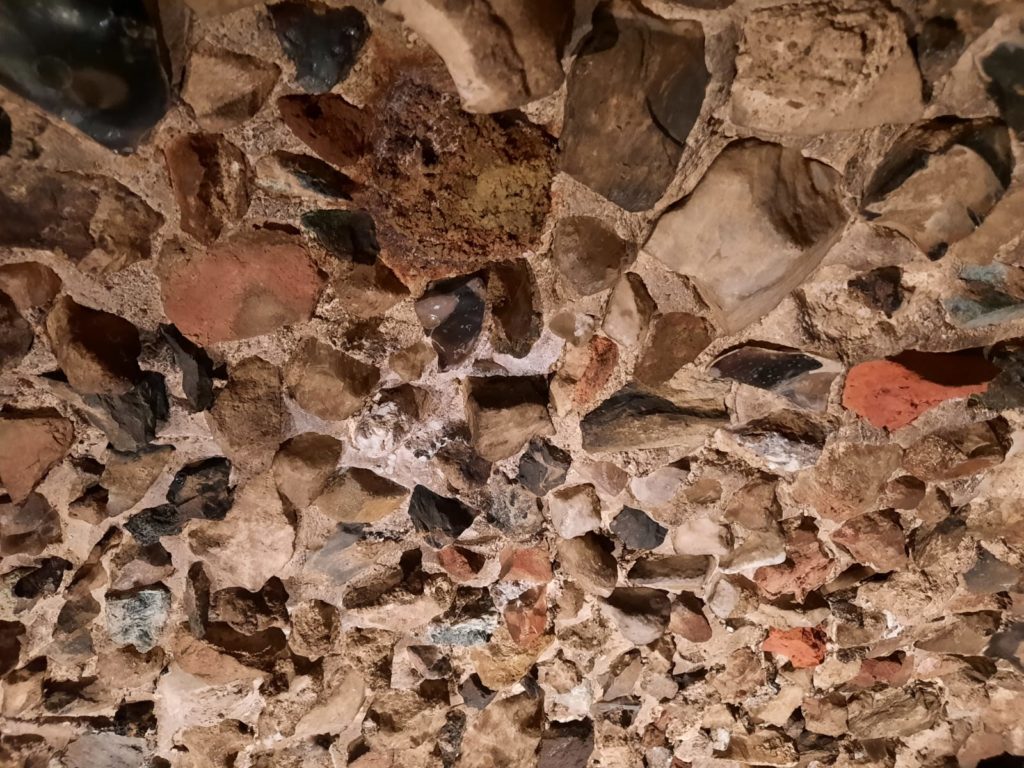
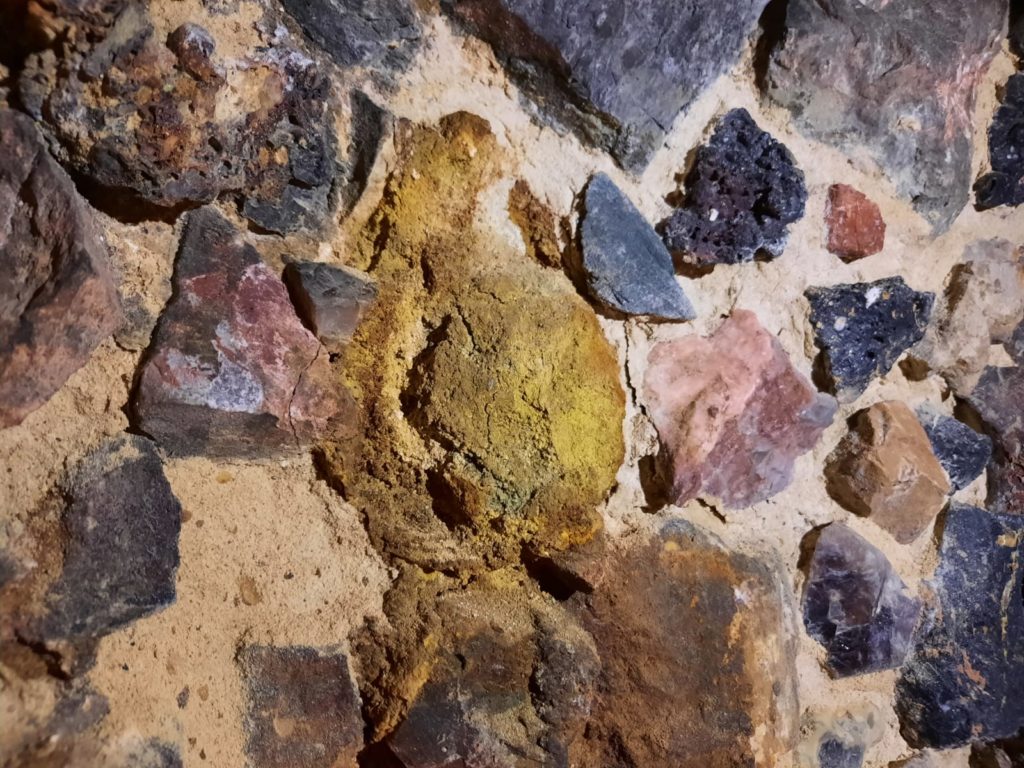
Alexander Pope And His House At Twickenham
So my day out, booked through the Pope’s Grotto Preservation Trust, began with a two hour slot to visit Pope’s Grotto, before a guided walk at Marble Hill. Twickenham is always a little far to get to from my home in South East London, and the day of our booking coincided with rail strikes, but the important thing is that we made it. Also, it’s a brief and scenic bus ride from Richmond if you’re interested or can’t get to Twickenham.
Anyway, we’re here to talk about Pope’s Grotto, not transport. Alexander Pope was an Enlightenment poet, translator and satirist. He’s the runner up (behind Shakespeare) for having the most quotes now in common parlance, including “Fools rush in where angels fear to tread.” Pope’s formal education was curtailed by the fact that he was a Catholic, and he was thus largely self-taught. Once he began to make connections in the literary world, his reputation as well as his circle grew quickly. He is famous for works including The Rape of the Lock, as well as his translations of Homer.
The proceeds from his translations enabled Pope to move to Twickenham in 1719. Many fashionable people lived here, as evidenced by the number of stately homes still standing. Pope employed architect James Gibbs to create a Palladian style villa for him at a section on the Thames known as Cross Deep. The resulting house was actually more an English country house than a Palladian villa. Nonetheless, it was the site of one of the first English picturesque gardens. As well as the grotto, Pope had a theatre, a bowling green, a grove and more. The garden was unfortunately disconnected from his house by a road; Pope extended his grotto into a tunnel to bridge the two in 1720.
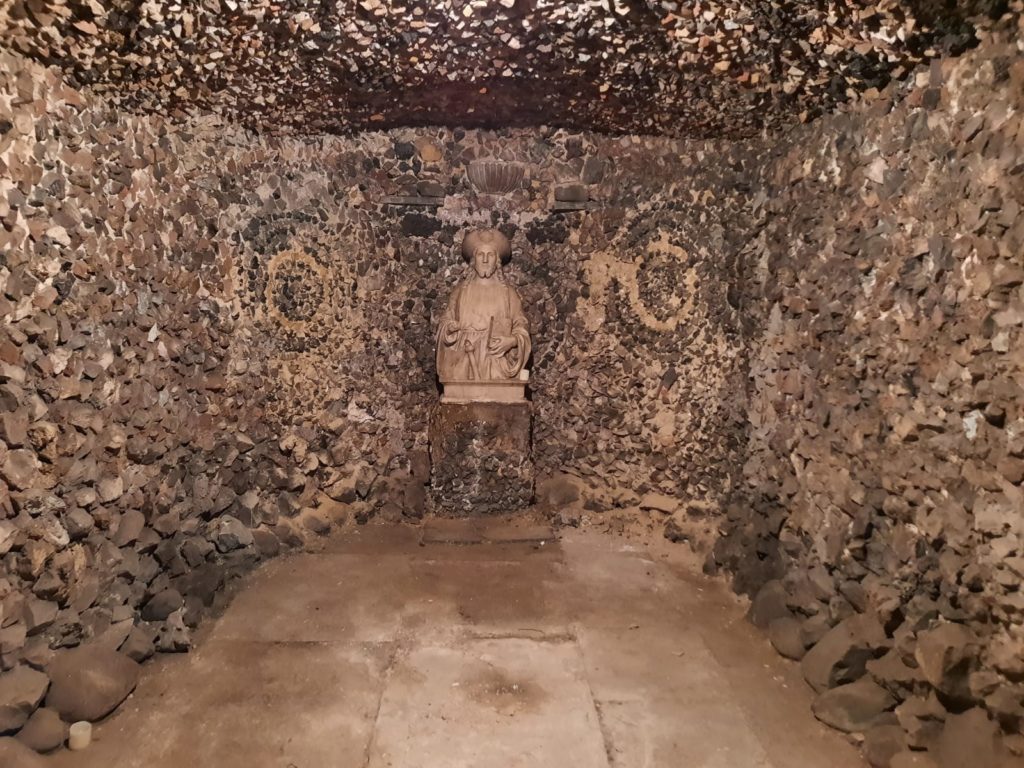
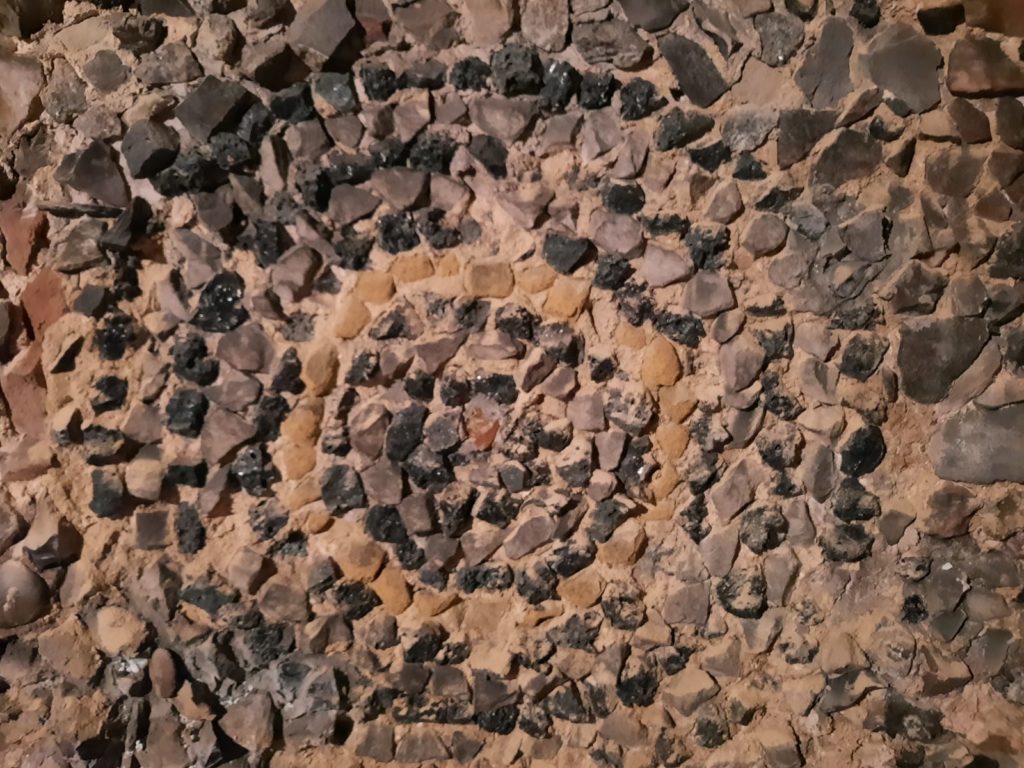
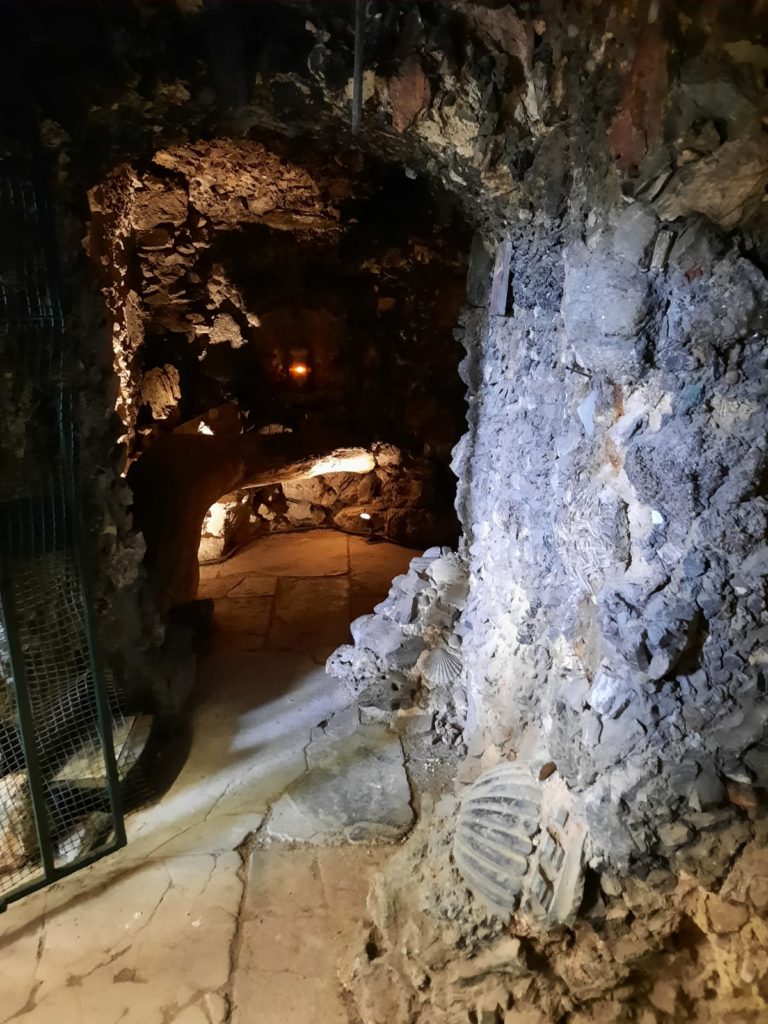
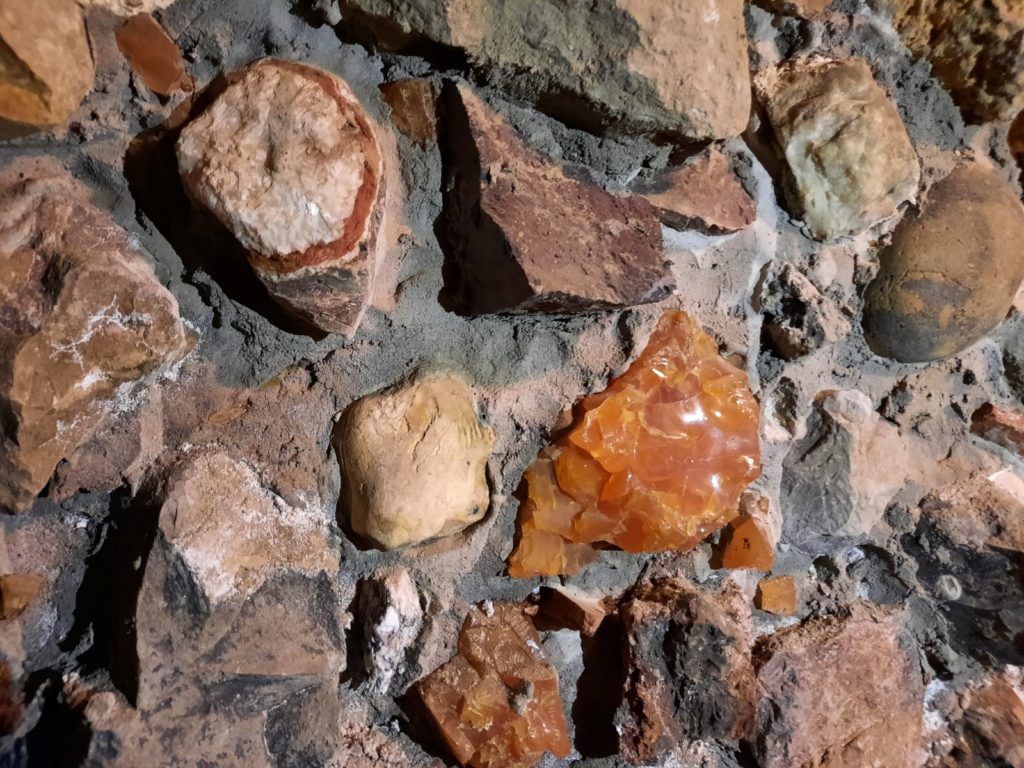
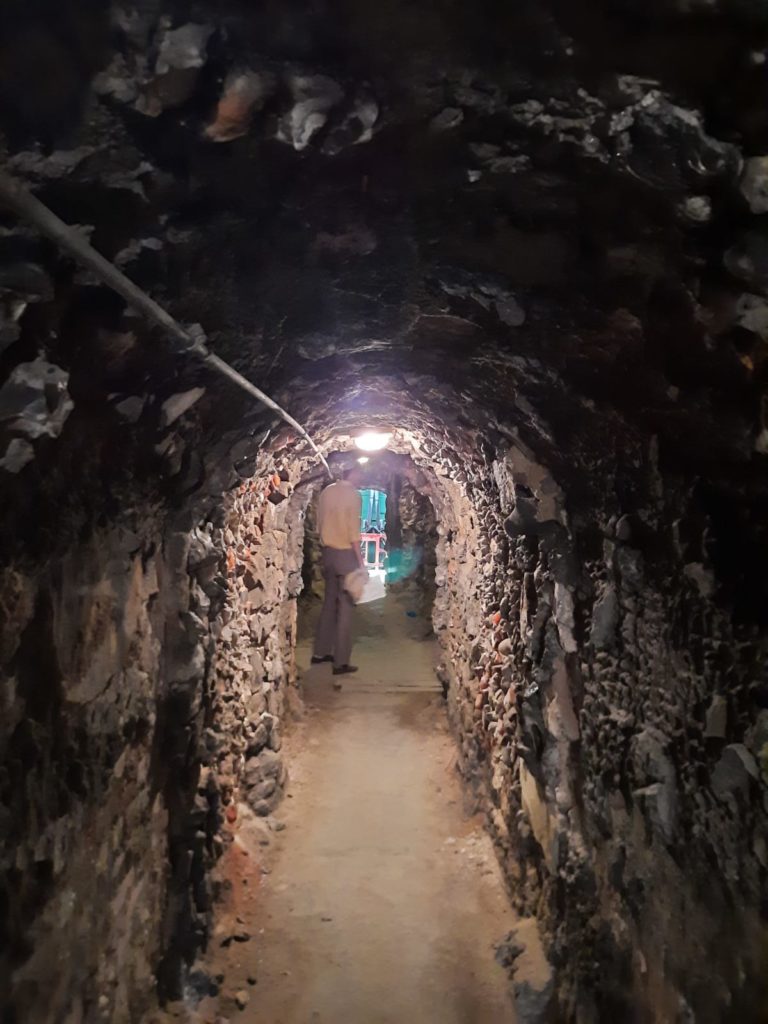
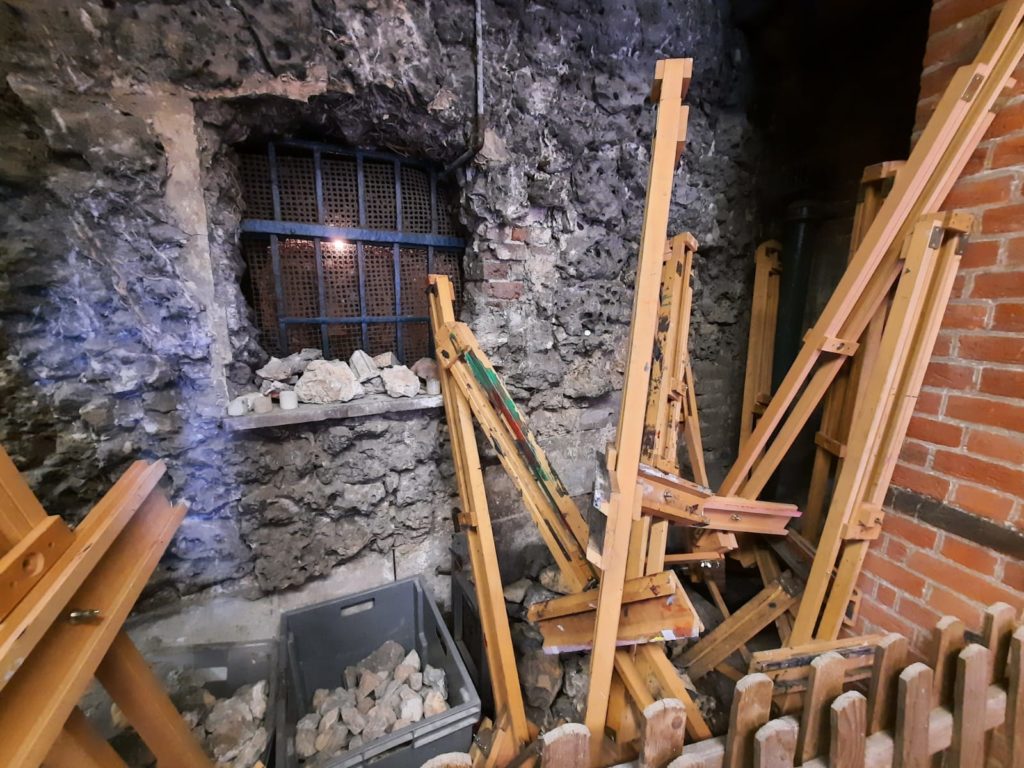
Pope’s Grotto
After Pope’s death in 1744, the house passed through various hands. In 1808, during the tenure of Baroness Howe of Langar, Pope’s villa was demolished. Little now remains of this replacement house, either. In fact, Pope’s Grotto is now underneath Radnor House Independent School. This mock-Tudor building is almost the antithesis of Pope’s Palladian villa, and was built circa 1845. It has been a school of one kind or another since 1919. It’s quite amusing to see the area outside the grotto used as a storage space, easels for art classes propped against the walls.
So during our two hour slot, we were free to explore the grotto, take in the river views and have a coffee on the terrace. Pope’s Grotto Preservation Trust provided us with an informative pamphlet, as well as stationing knowledgeable guides in and around the grotto to answer questions. It’s the sort of place where you need to deliberately slow down and take your time. Really you could be done in 5 minutes, but when you’ve travelled all the way there during a rail strike, you want to make it worthwhile.
And there is plenty of ‘slow looking’ to be done. There are various statues (mostly later than Pope), as well as mineral specimens. These include ores, stalactites, crystals, quartz, and so on. It can be a bit like a ‘Where’s Wally?’: we spent ages looking for a hexagonal piece of basalt from the Giant’s Causeway that we knew was around somewhere. It’s very satisfying to finally identify what the pamphlet is explaining.
Part of Pope’s Grotto has undergone restoration, but there is plenty more to do. If you like quirky and historic sites, then it’s well worth checking this one out, especially after more restoration work due to start soon.
Salterton Art’s Review’s rating: 3.5/5
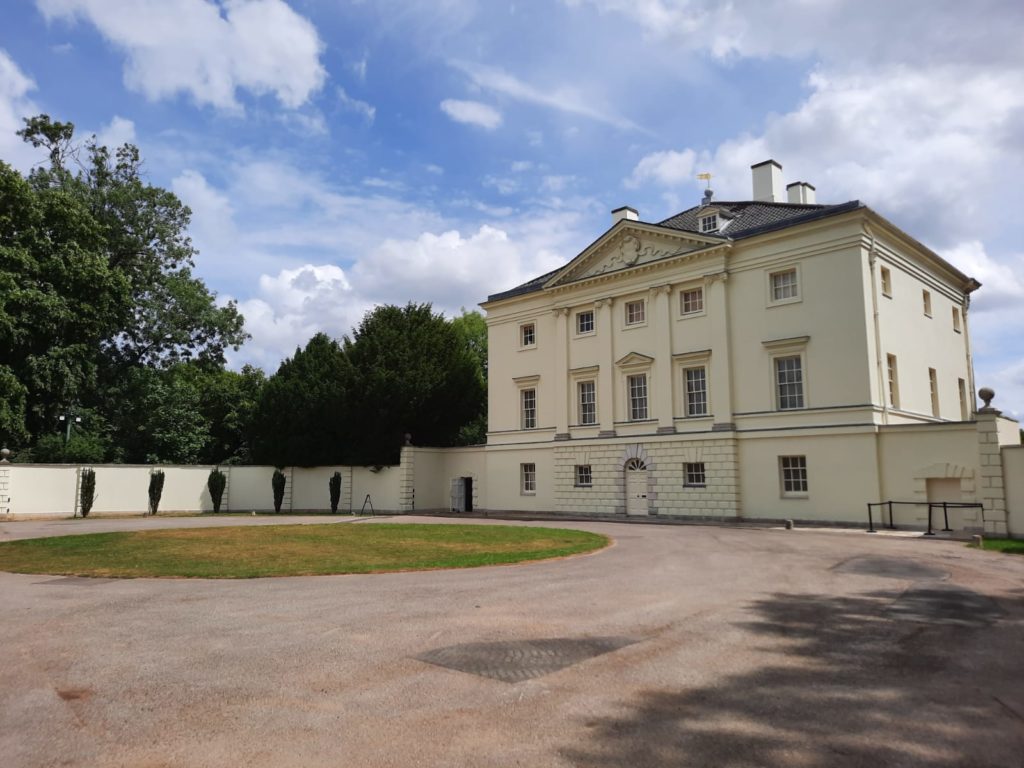
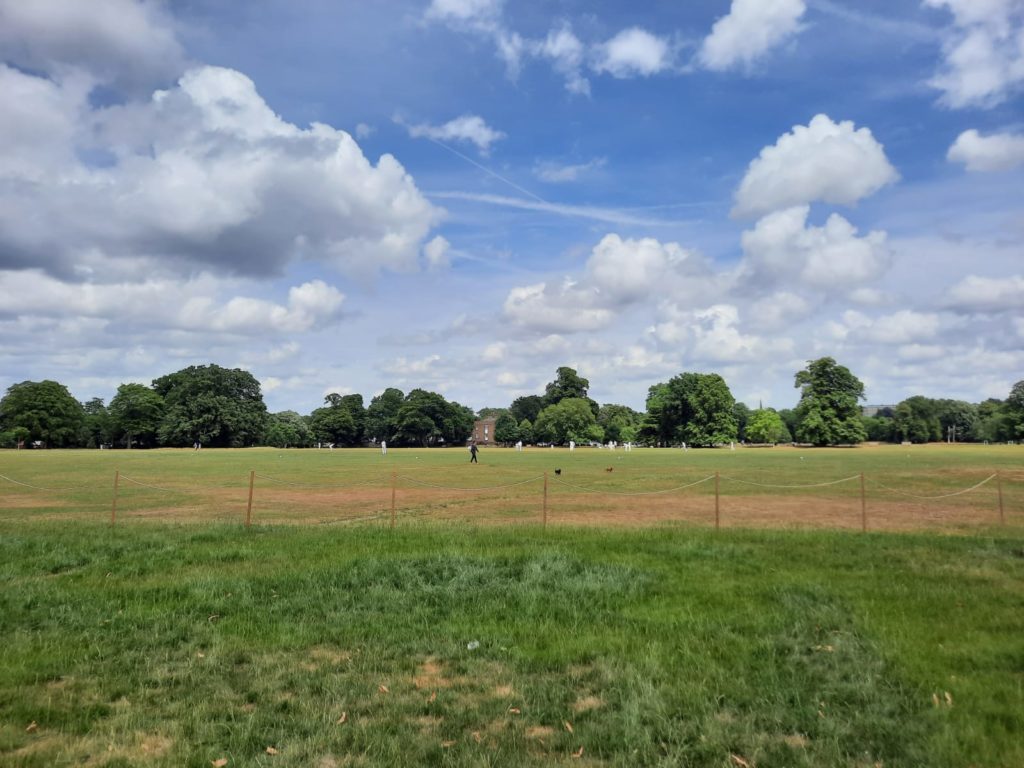
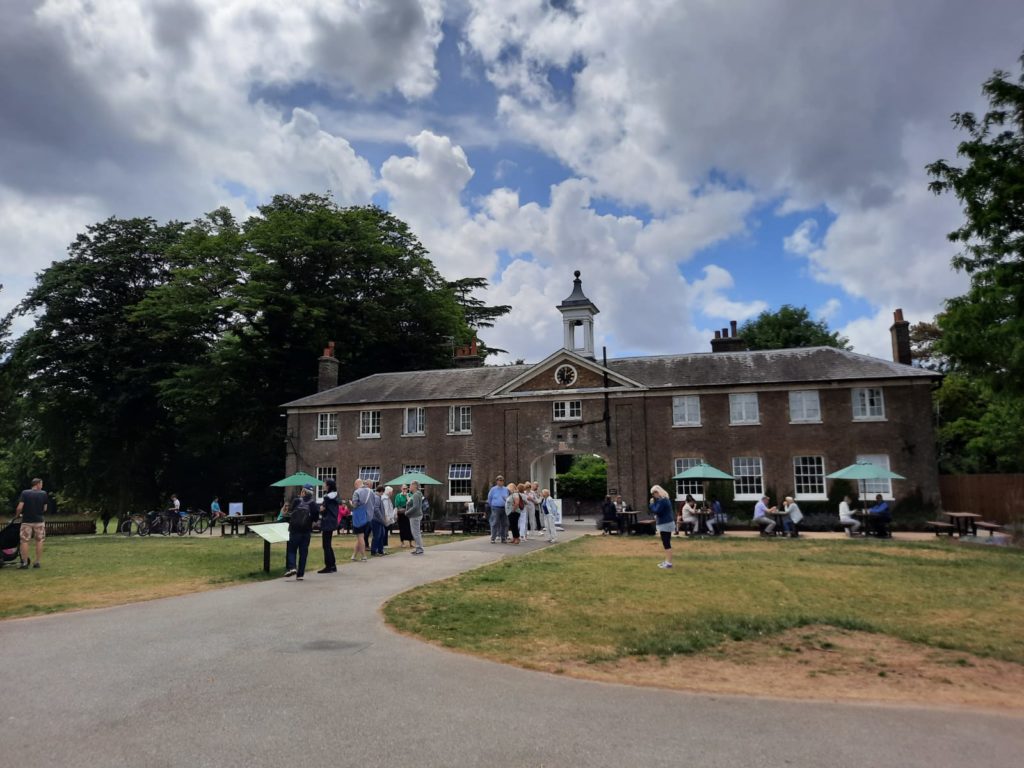
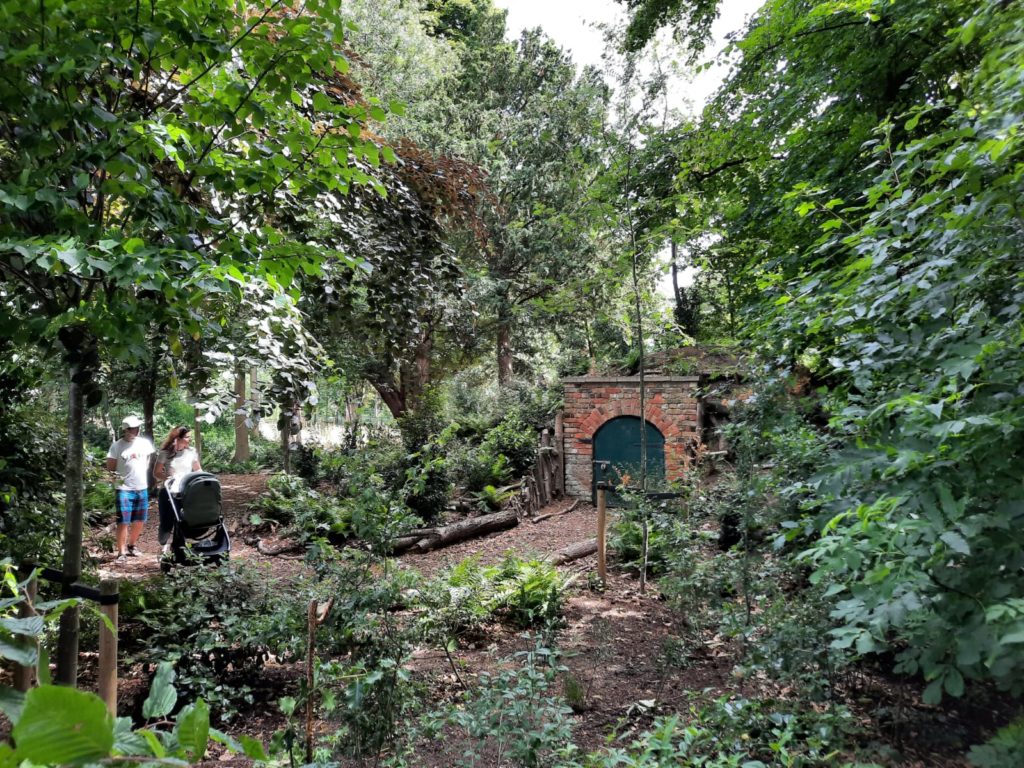
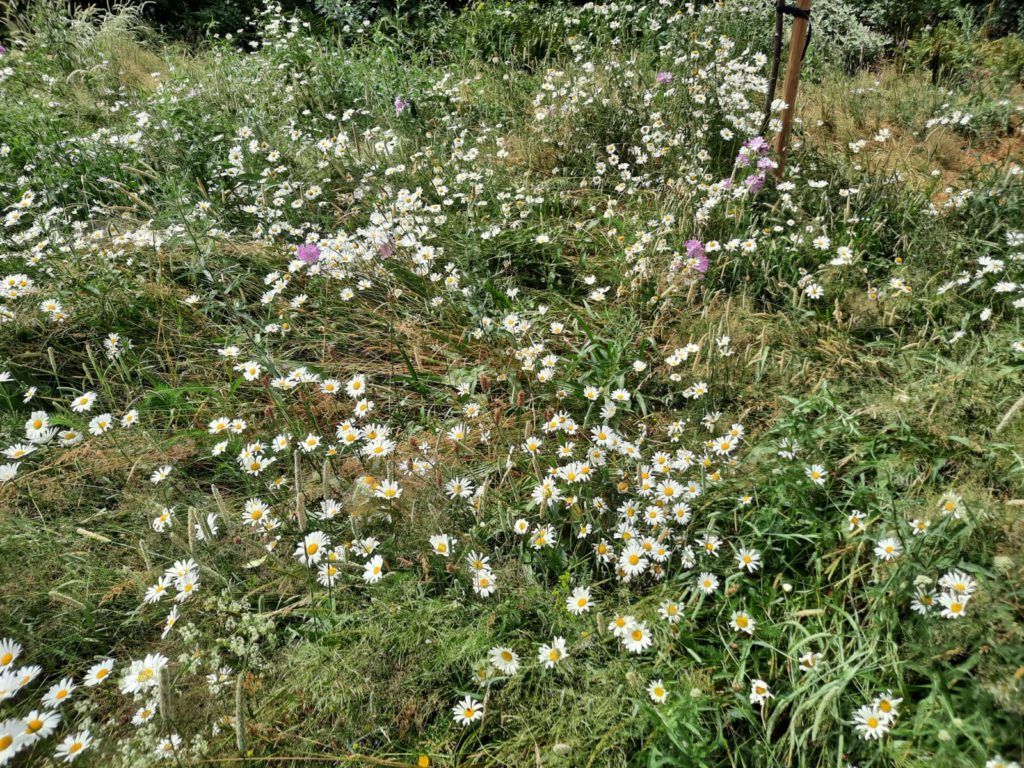
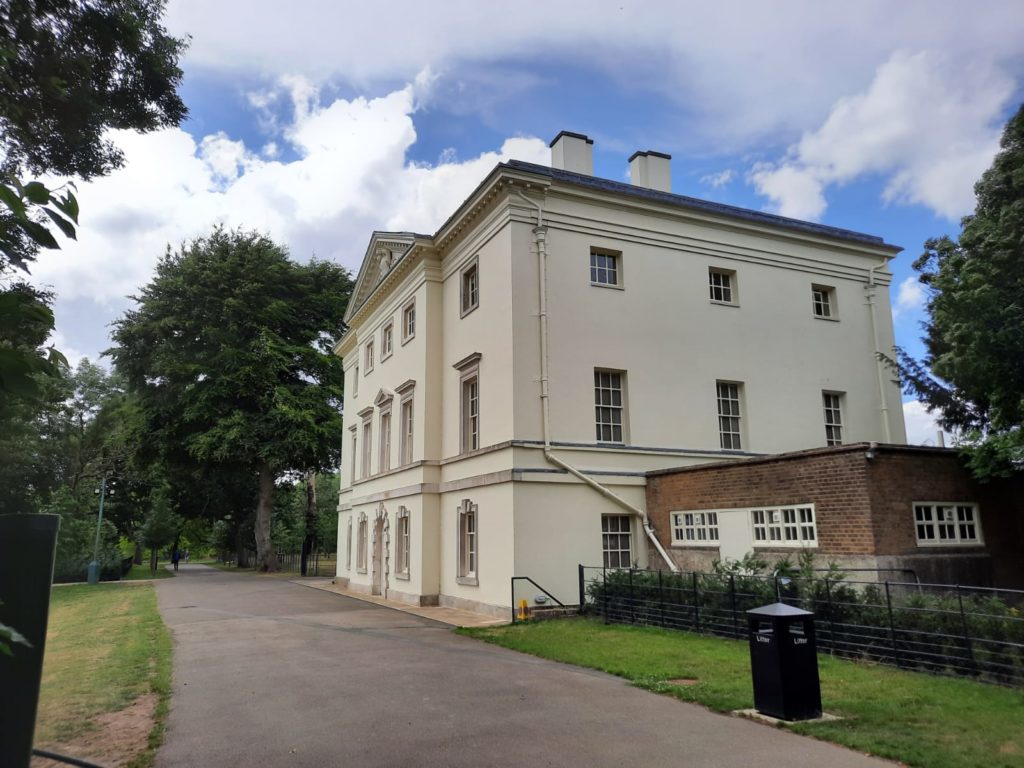
Onwards to Marble Hill
The first part of our Twickenham day out complete, we walked on to Marble Hill, past Orleans House, stopping for lunch on the way. We were ostensibly here to see another grotto, but it was my first time coming to Marble Hill at all so let’s start there.
Marble Hill is another Palladian villa. Henrietta Howard, Countess of Suffolk, had it built between 1724 and 1729. It’s design was soon famous, and became the standard for English country homes. Also plantation houses in the American colonies, which is a less good claim to fame. Howard was the mistress of King George II and unhappy in her first marriage, to Charles Howard, 9th Earl of Suffolk. They officially separated in 1727 and he died in 1733. Her second marriage was happier.
For an unhappy woman constantly under the gaze of courtiers, Marble Hill would have been a much-needed retreat. Howard had many literary friends, including Jonathan Swift, and Alexander Pope himself. She entertained here when at home, drawing on the wide social circle that all those lovely riversides villas provided.
Like Pope’s villa, Marble Hill had various owners after Howard’s death. In 1902 an Act of Parliament saved the house and grounds from becoming a housing estate. English Heritage now owns it, and has just completed a three-year renovation project, “Marble Hill Revived”. This has restored some of the original character to the house, and also allows for better public access and opening hours. Work currently underway to landscape and restore Marble Hill’s grotto is one of the final pieces in the puzzle.


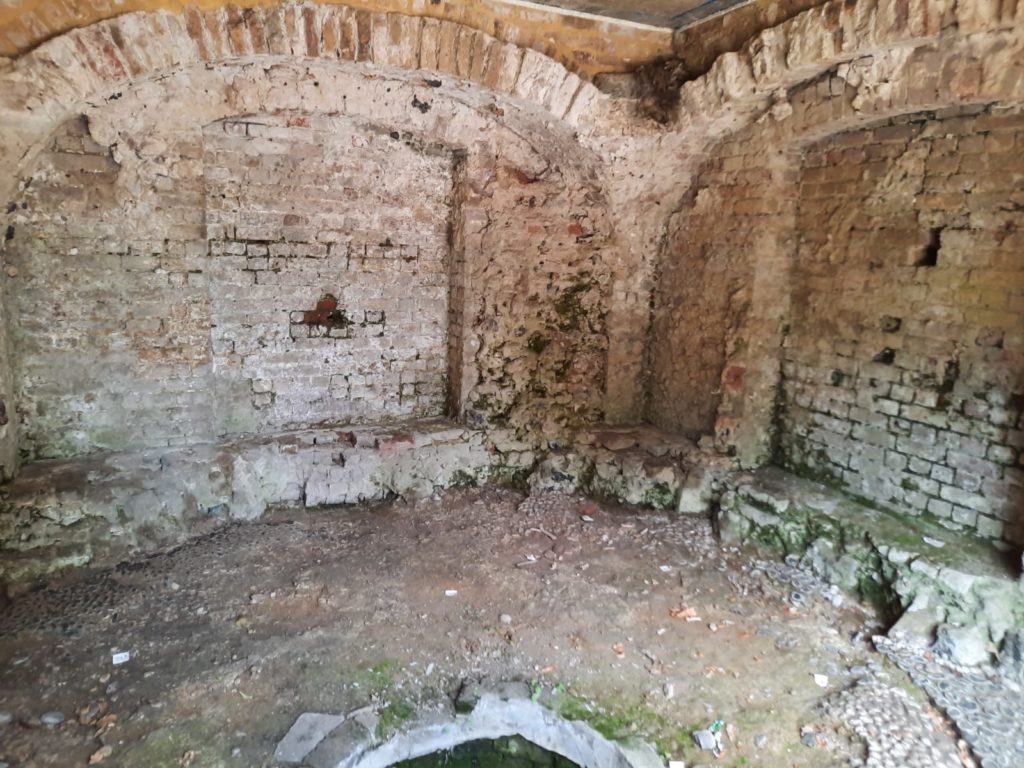
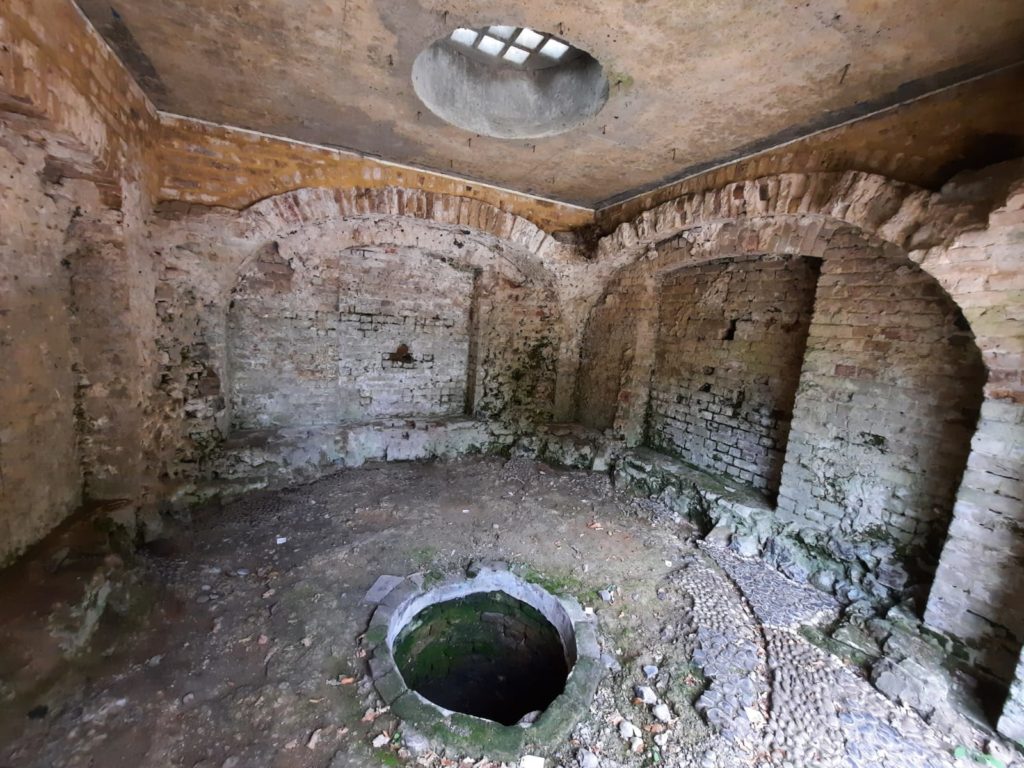
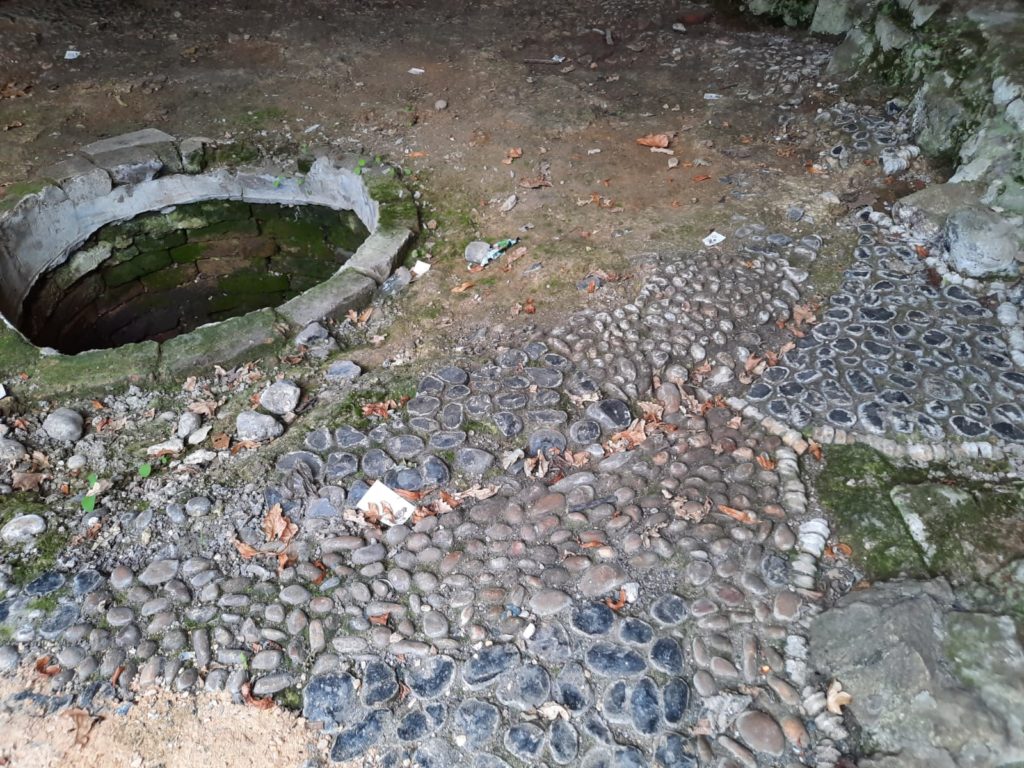
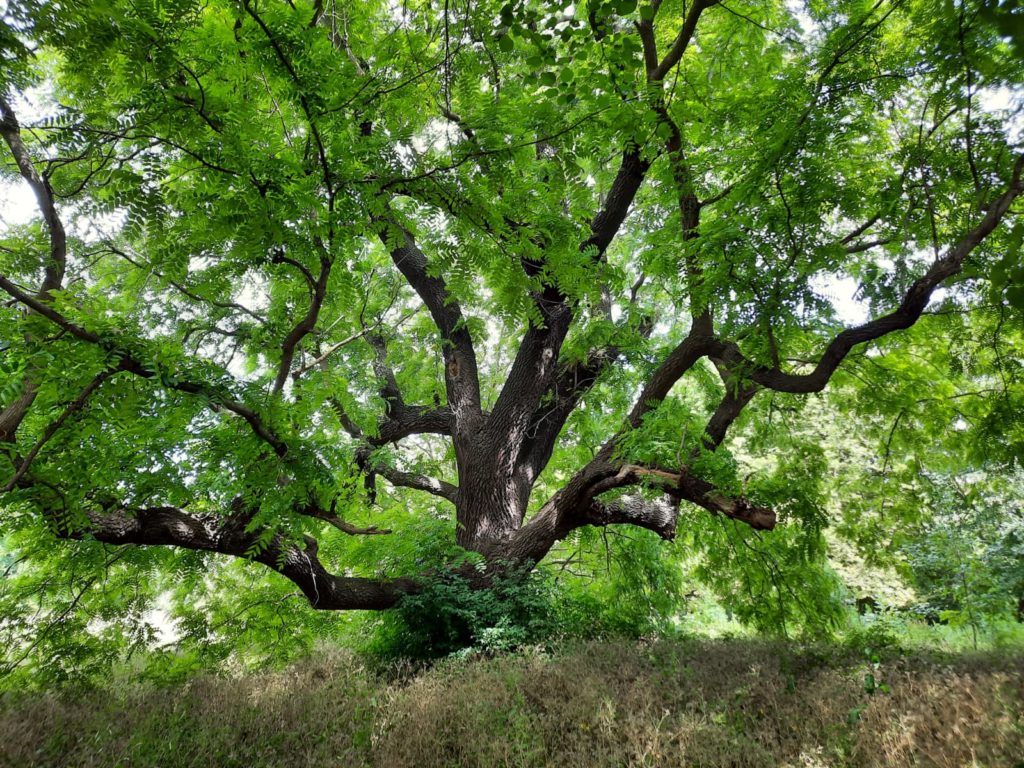
Marble Hill’s Grotto
For the second part of our grotto-themed day, we gathered at the Coach House Cafe in Marble Hill Park. There we met with English Heritage volunteers, who would take us on our garden/grotto tour. Afterwards we had an opportunity to visit the house itself, which is free to enter.
To start out with a small critique before talking about all the great things, I found that this tour assumed such a degree of prior knowledge that it would be a barrier to entry for many people. There was first of all an expectation that we knew Henrietta Howard’s story intimately (I’d never heard of her, or Marble Hill, before this excursion). Even Marble Hill’s farm was reportedly so famous we surely knew of it. And as we went around the grounds we were expected to have opinions on formal and informal gardening of all kinds. This sort of thing doesn’t bother me. But if I were less confident about attending cultural events then I might have come away with the impression that this definitely wasn’t for me.
Expectations of what is ‘common knowledge’ aside, the tour was very informative. I learned about Marble Hill, 18th Century gardens and their usage, Henrietta Howard, and the contemporary work to echo the original garden layout in a contemporary way. It was a great time of year to visit and see the wildflower meadow. And I enjoyed the tales of Swift and friends carousing in the ice house.
As for the grotto itself, it is a little underwhelming after Pope’s Grotto. It is small, barely a few metres square. And definitely historic-looking, but without the flourishes of Pope’s one. Hilariously, the original water feature used to be a gardener standing on the other side of a wall and pouring water through! But the team at Marble Hill are part way through a landscaping project which will make a lot more of the grotto. They are using a contemporary poem to determine the planting scheme. And from what I saw on my visit, it’s going to look great!
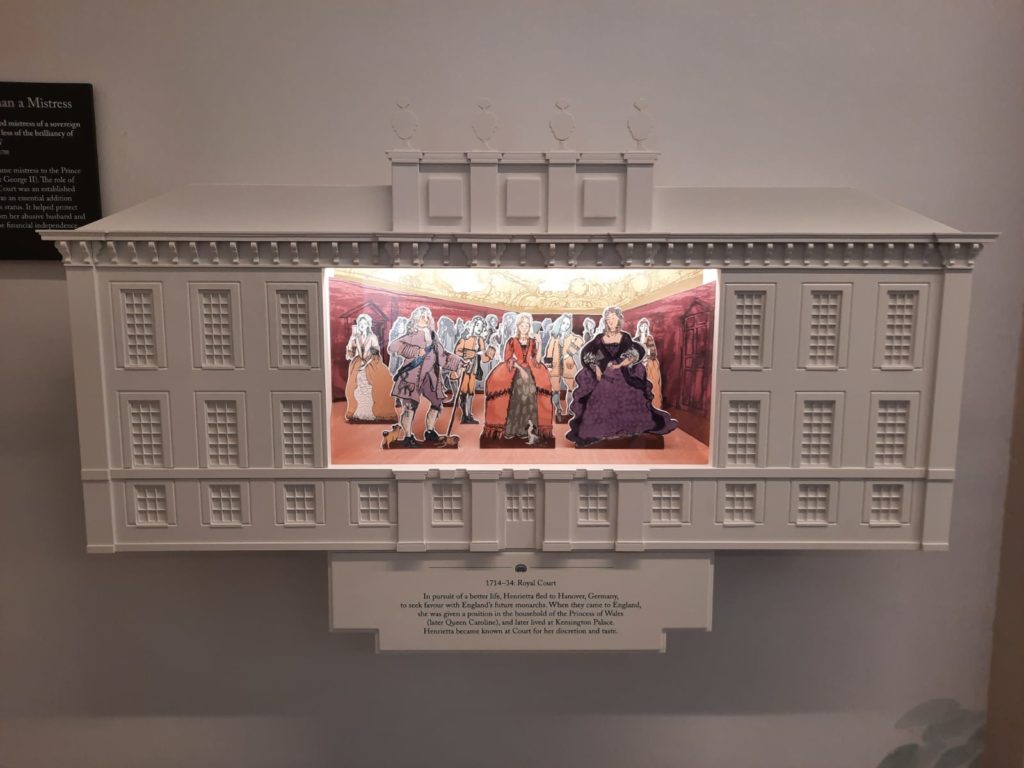
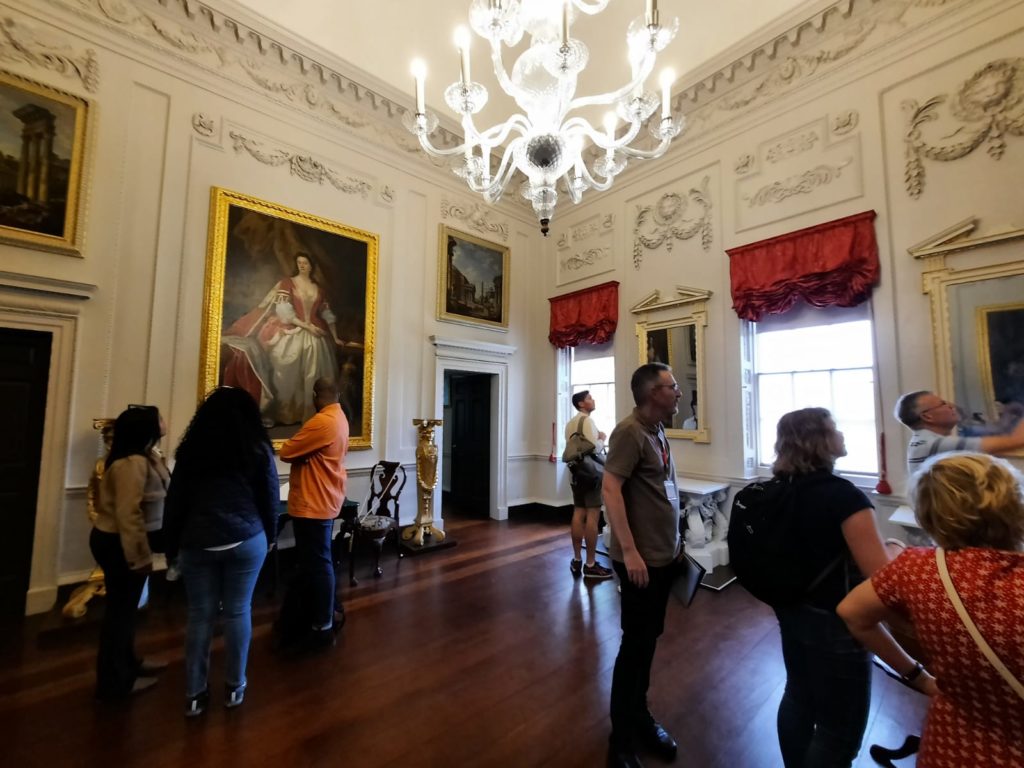
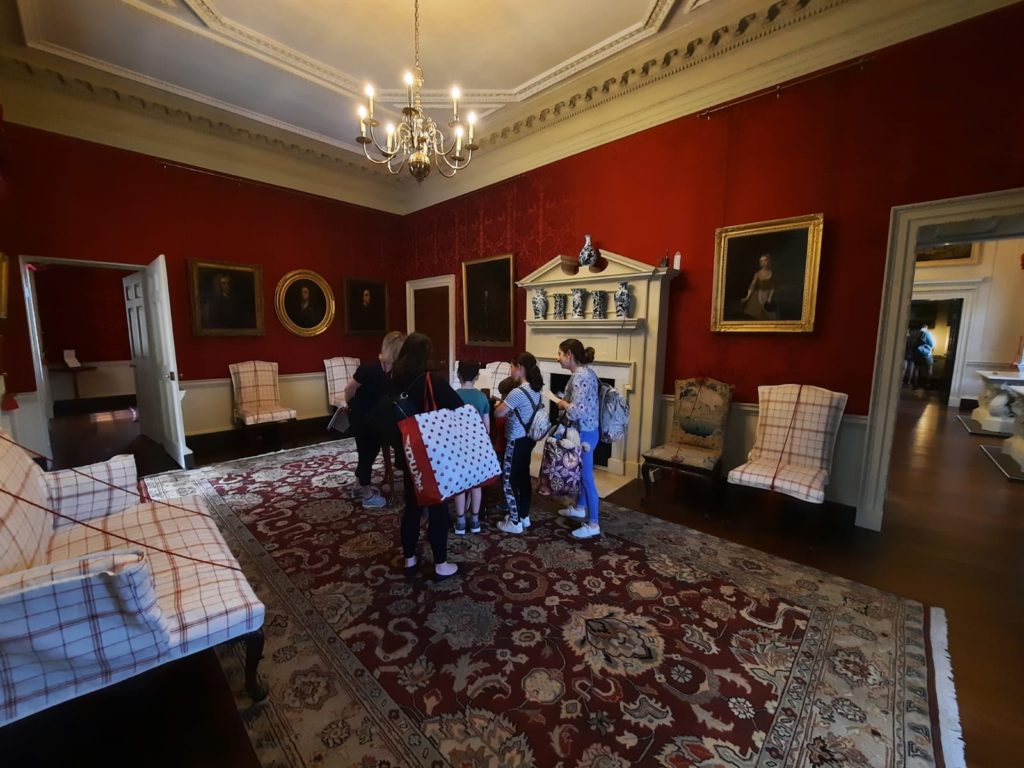
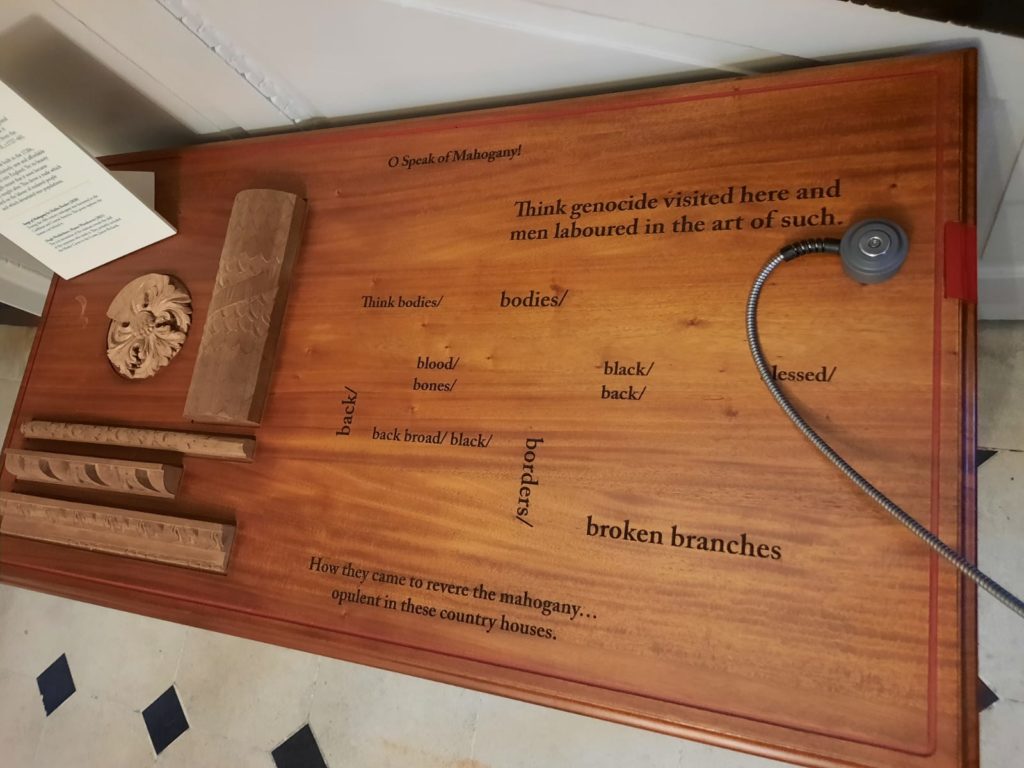
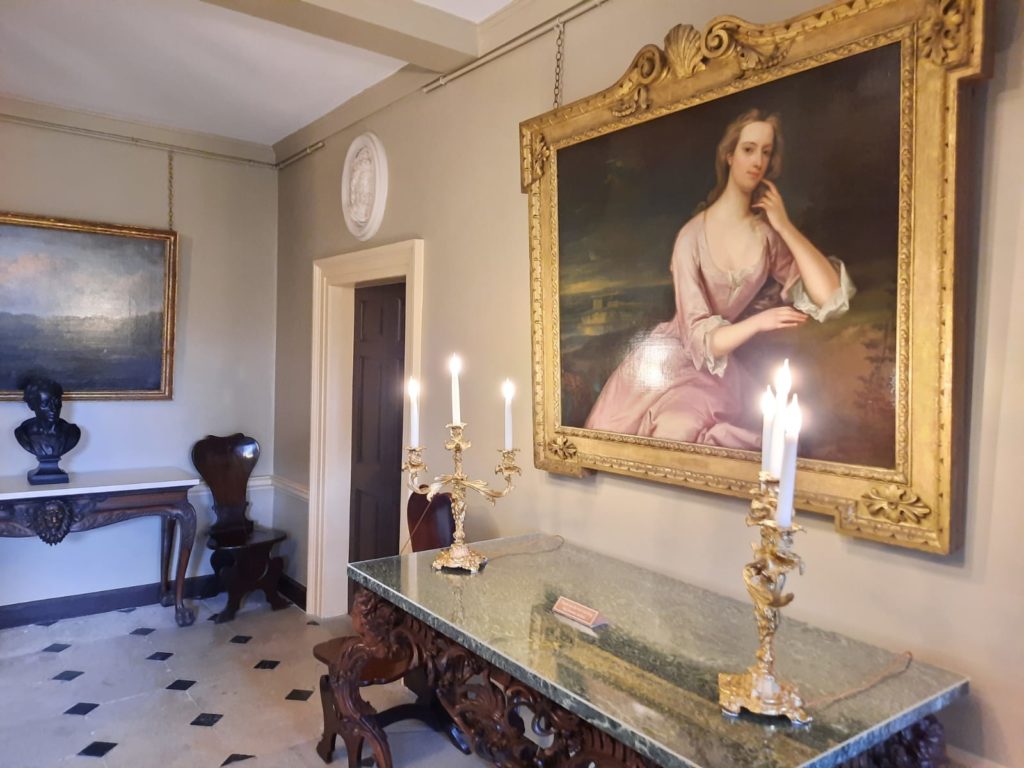
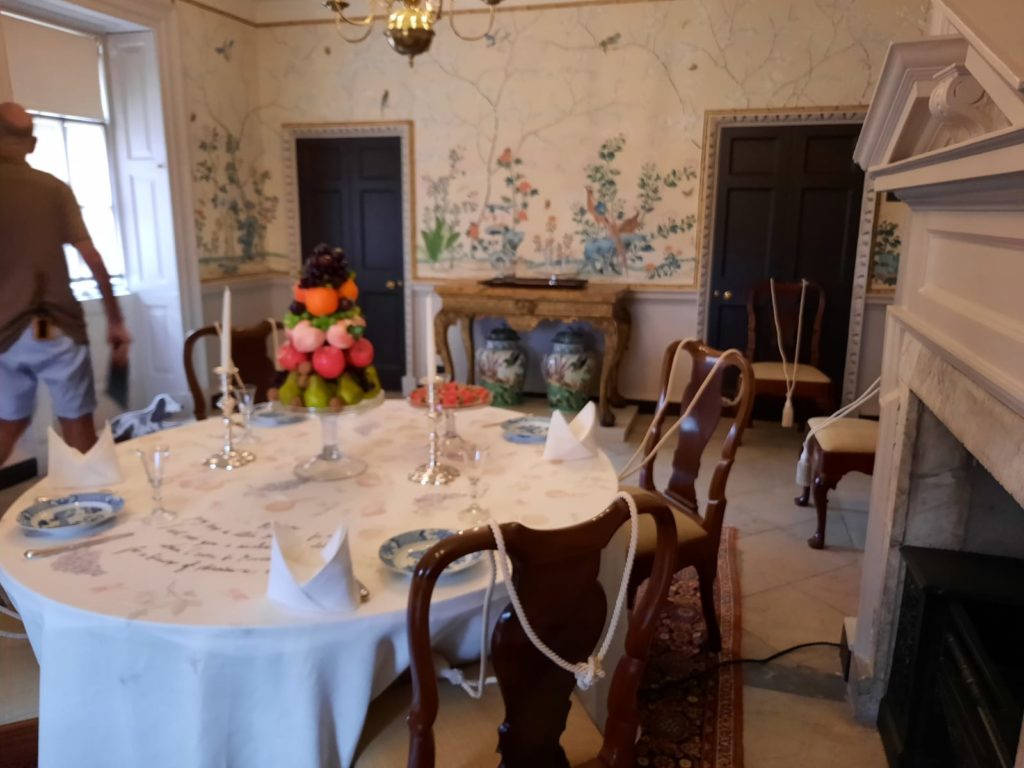
Marble Hill House
After the garden/grotto tour was complete, I had a quick look at Marble Hill House. I was pleasantly surprised by what I saw. The restoration work looks good, and the focus is now very much on Henrietta Howard herself. Not that they really come out and talk about the angle where she was George II’s mistress. More her childhood, unhappy and happy marriages, and social life.
Howard’s possessions didn’t remain together, so by the time the house came into public ownership in 1902 there wasn’t much left. A Chinese lacquer screen was about it. But today there are loans as well as presumably English Heritage-owned furniture and other objects to set the scene. There are information panels throughout to tell visitors about how Henrietta Howard used the rooms, and details of her life. She’s positioned as a survivor and an independent woman first and foremost.
Given that it’s free to visit Marble Hill, this is a great educational resource or day out. For me it wasn’t the most memorable of stately homes, but was a pleasant way to spend time on a sunny afternoon. It was also a nice way to finish my day exploring West London’s grottoes; it is very evocative of that Enlightenment literary lifestyle.
Salterton Arts Review’s rating: 3/5
Trending
If you see this after your page is loaded completely, leafletJS files are missing.

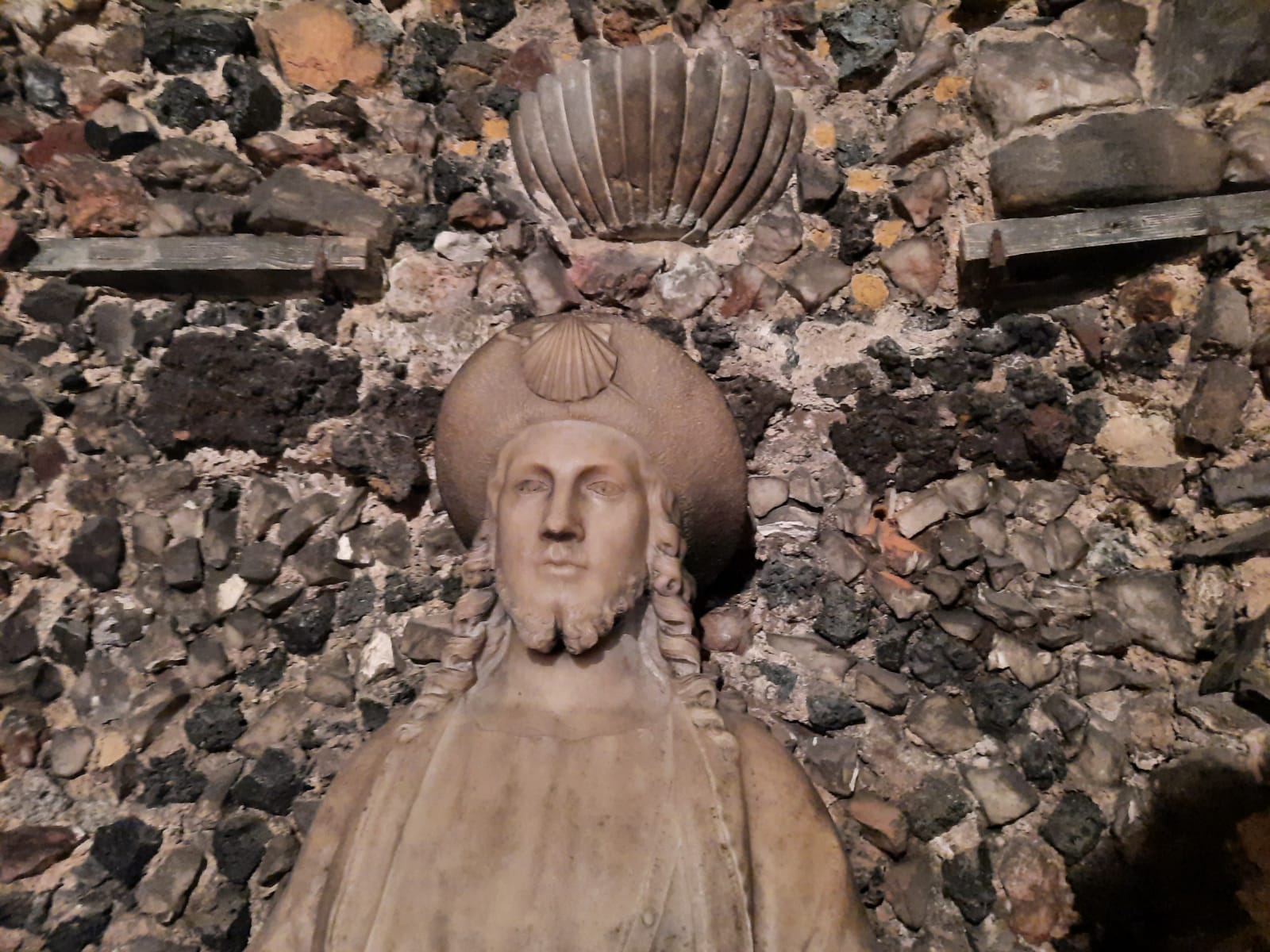
One thought on “Grottoes of West London: Marble Hill & Pope’s Grotto”